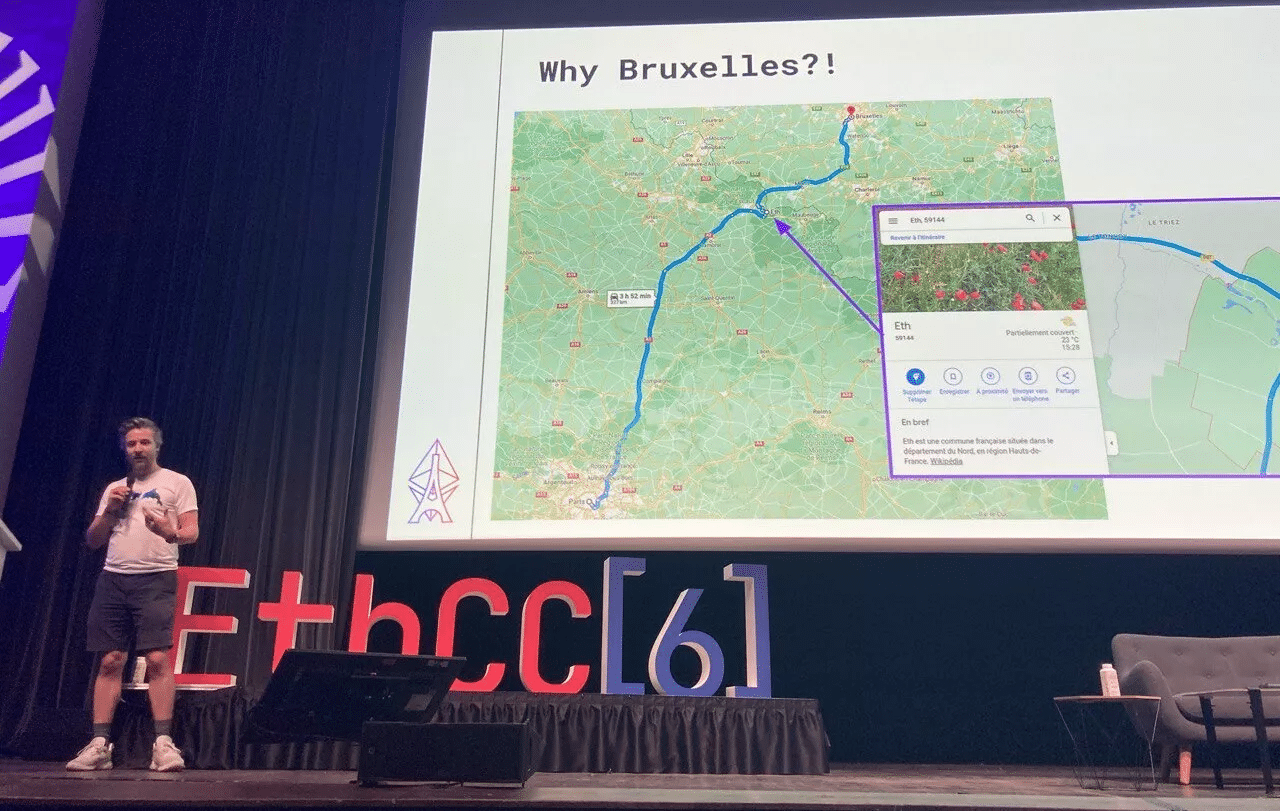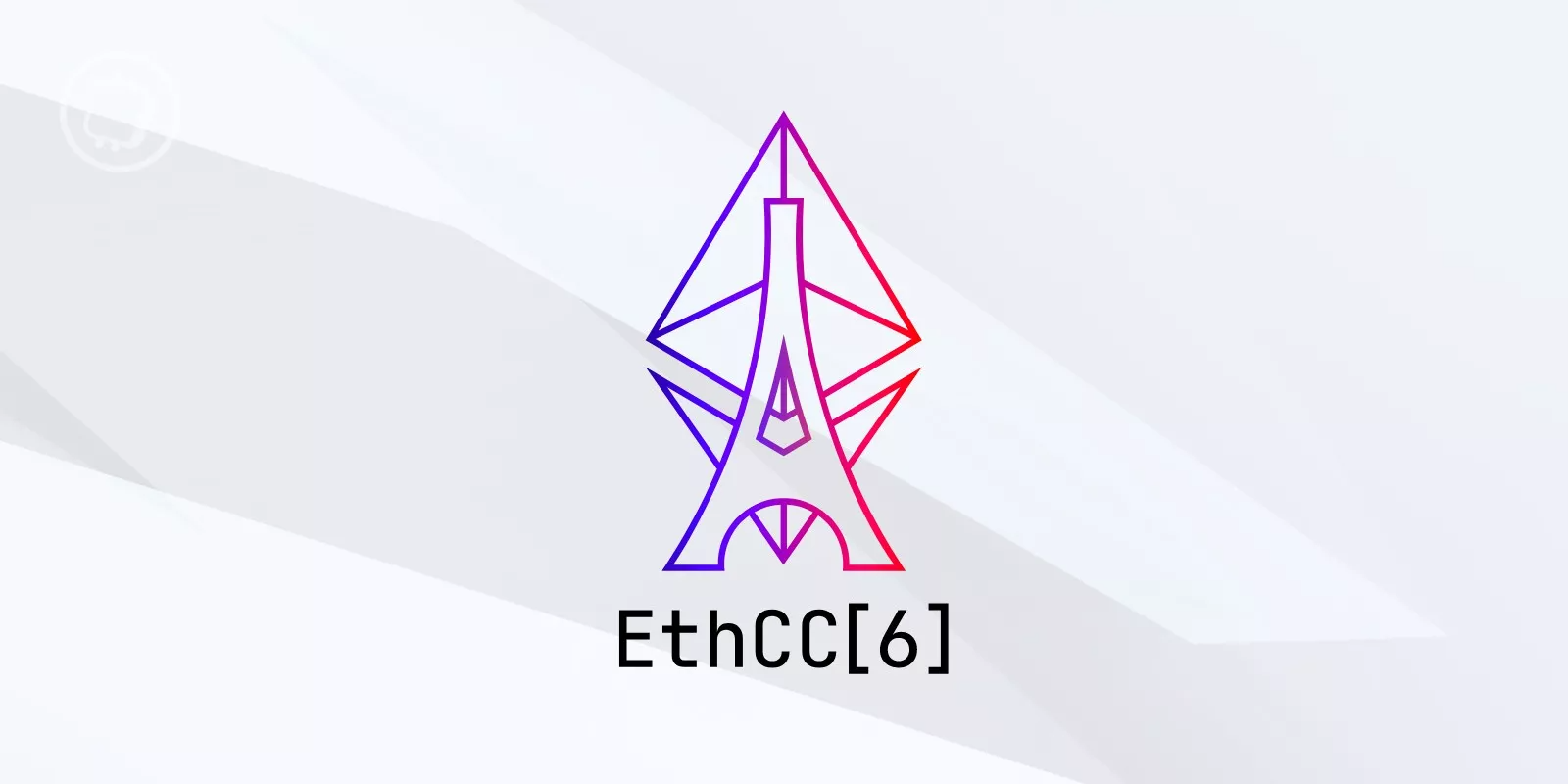Over the course of 4 days, the 6th edition of the Ethereum Community Conference (EthCC) brought the Ethereum community together in Paris for an exciting series of conferences. As new ideas were shared, stimulating debates took place and breakthroughs were celebrated, what were the highlights to take away from EthCC[6]?
The EthCC [6], the must-attend event to celebrate Ethereum
The 6th edition of the Ethereum Community Conference (EthCC), the major event of the blockchain ecosystem in Europe and particularly dedicated to Ethereum, took place from 17 to 20 July.
Over the course of 4 days, a wide range of topics were addressed by many of the leading figures in the world of cryptocurrencies: the crucial importance of layer 2 solutions to boost Ethereum’s capabilities, the introduction of account abstraction, the need for higher-performance stablecoins, the growing regulatory landscape around the world, and much more.
Here’s a look back at the most memorable speeches at ETH [6], including one by the famous Vitalik Buterin.
It’s happening! It’s happening!
Welcome to EthCC
Opening ceremony with @jdetychey taking place now at Main Stage pic.twitter.com/o8PXDHqCyB
– EthCC – Ethereum Community Conference (@EthCC) July 17, 2023
Day 1: Stablecoin in the spotlight
The EthCC [6] was launched with a keynote speech by Jérôme de Tychey, President of Ethereum France. Over the next 4 days, a series of conferences and announcements highlighted the latest advances in the blockchain ecosystem. Here is a selection of the highlights.
Renaud Dubois, R&D engineer at Ledger, detailed the physical wallet manufacturer’s plans to integrate WebAuthin. This standard, developed by the W3C and the FIDO Alliance, defines a user authentication system based on public key cryptography, rather than the use of passwords:
“
“.
“At Ledger, our idea is to get new users on board using a very simplified user experience and then, when the stakes are high, convince users to get a hardware wallet with anti-malware features. “
Gerrit Hall, from Curve Finance, gave a brief history of the different types of stablecoins, explaining their advantages and disadvantages in terms of the stablecoin trilemma: stability, decentralisation and capital efficiency:
“If you accept the stablecoin trilemma, you are only limiting what you say you are able to do with your conception of stablecoin. “
Patrick Hansen, EU Strategy & Policy at Circle, highlighted the under-utilisation of euro-backed stablecoins in the cryptocurrency market and provided an optimistic outlook for their future thanks to growing institutional adoption, regulatory clarity and utility-driven use cases:
“The euro stablecoin market will be supported by political actors in the European Union, as blockchain-based economies will grow, and the importance of these markets for local currencies will grow. “
Some other news in brief:
- Arianee has unveiled V2 of its protocol that allows developers to create multiple collections, customise each collection with unique features and improve the versatility of NFTs ;
- Safe, a wallet infrastructure provider, has partnered with Monerium, an authorised stablecoin issuer, to connect $60 billion of digital assets to the European banking system;
- Massa Labs has announced the end of its blockchain testnet in favour of the arrival of its mainnet;
- Neon EVM announces that the 1st Ethereum Virtual Machine (EVM) is online on Solana’s mainnet.
Day 2: Vitalik Buterin’s speech
This 2nd day was marked by the highly anticipated conference by Ethereum co-founder Vitalik Buterin. In particular, he presented account abstraction and its importance for the adoption of blockchain:
“I want everyone to move to multisig wallets and be able to use multisig wallets super easily and cheaply. One of my other goals is that when quantum computers come along, people will be able to update their existing accounts with quantum secure cryptography without us having to comment on what quantum secure algorithm you’re using. “
Pierre-Nicolas Hurstel, CEO and co-founder of Arianee, highlighted the transformative impact of true ownership and self-controlled personal data, with digital wallets playing a central role in digital experiences:
“We believe in a future where users take back control of their data, eliminating the need to entrust it to brands or platforms. Instead, we own our data in secure locations, and the user experience interface will be vastly improved as a result. This is the path that will lead us out of the labyrinth that the Internet has become. “
David Bachelier, CEO APAC of market maker Flowdesk, discussed the problems facing market making and proposed the solution offered by “Market Making 2.0” with Market-Making-as-a-Service, highlighting that projects can benefit from a trading infrastructure that allows them to retain control of their collateral:
“Losing control of your asset means giving your tokens to a third party, which requires a lot of trust, especially in the post-FTX era. “
Other news in brief:
- DeFi Beefy Finance protocol launches on Polygon zkEVM ;
- Mangrove DAO has launched the beta version of the programmable order book for DEX on the Polygon mainnet;
- Sismo has introduced Sismo Connect, a crypto-native single sign-on (SSO). This solution allows users to privately aggregate their identities and selectively disclose personal data to applications via zero-knowledge proofs (ZKP).
Day 3: in search of the best scalability solutions
Marek Olszewski, co-founder of Celo and CTO of cLabs, spoke about Celo’s eventual move to layer 2 of the Ethereum blockchain.
Tracing Celo’s history and the challenges addressed in the governance proposal currently being voted on by the community, he said:
“I’m very excited, it seems the reception from people looking at the proposal online has been very good… expect to see Celo as an L2 soon in your home. “
Walker Mayerchak, software engineer at Circle, taught us how Cross-Chain Transfer Protocols [CCTP] allow cross-chain applications to build composable streams on top of the native USDC:
“With Arbitrum bridge or other optimistic rollups, it takes 7 days to withdraw [funds] from layer 2 to layer 1, with Circle it takes 15 minutes. “
Chris Lyons, of the a16z crypto fund, emphasised that in order to get Web3 out to as many people as possible, you first need to partner with the right brands and get rid of the technical vocabulary:
We want to be able to promote the technological infrastructure and the consumer application at the same time. Every time we talk about our technology, we start with the technology. I think we need to reach 100 million users using blockchain, ETH. But we have a very big problem, the problem is us. “
Some other news in brief:
- Aleph.im joins the Blockchain Game Alliance, bringing decentralised cloud solutions to the games industry;
- Nethermind and EigenLayer join forces to leverage Ethereum’s security to fuel blockchain innovation;
- Manta Network developer p0x labs raises $25m Series A, taking its valuation to $500m.
Day 4: The importance of account abstraction
On this last day of the EthCC [6], several Web3 industry players focused on account abstraction.
Julien Niset, co-founder of digital wallet Argent, discussed the potential of “invisible wallet” account abstraction to simplify the overall experience that encompasses cryptocurrencies. According to him, this can be done by making it easier to retrieve a wallet without a passphrase, offering fee-free transactions while allowing users to navigate the blockchain with enhanced security measures:
“The very first step in everyone’s journey to blockchain is actually centred around the wallet. “
Lukas Schor, co-founder of Safe (formerly Gnosis Safe), presented the “Modular Smart Account Framework” and how it reduces the inevitable risks that come with account abstraction:
The customisable nature of modular smart contracts means you can tailor them to the needs of specific users. You don’t have to anticipate exactly what users want, but they may start somewhere and perhaps, over time, have different preferences in terms of functionality and security. “
The EthCC [7] will take place in Brussels
The next edition of the EthCC will not take place in Paris, but in Brussels! Jérôme de Tychey, President of Ethereum France, announced this at the closing ceremony. The reason? The Paris Olympics in 2024 mean that prices for accommodation and event space rental will be exorbitant :
“We have decided that next year the EthCC will not be held in Paris because the Olympics make it too expensive a venue. That doesn’t mean we won’t be coming back to Paris, it’s about you being able to afford to come and attend the event – Instead, we’re going to Brussels!”

